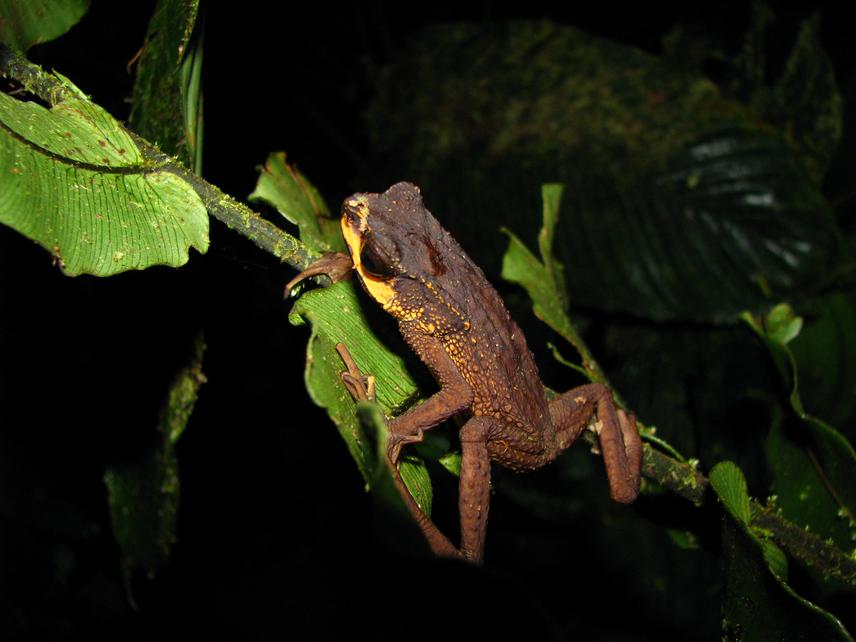Paul David Alfonso Gutiérrez-Cárdenas
Other projects
26 Sep 2013
Conserving Amphibians in South-Western Colombia: Population Analysis of Threatened Amphibians from Reserva Natural Rio Ñambí, Nariño, Colombia
This research aims to continue a population study of the species Rhaebo colomai started in 2013. We want to get additional data to estimate both the population status and conduct analysis of population genetics. In addition, to carry out environmental education processes devising conservation strategies for the species.

After completing the first phase of the project started in 2013, we want to focus now on the rediscovery of Rhaebo colomai, classified as Critically Endangered because of its area of occurrence is less than 100 km2. This species was originally reported from Ecuador, but considered extinct there; in Colombia, the only known surviving population is in the RNRÑ (Ron et al. 2015 ). We want to continue monitoring the population to get data for to estimate the population size and perform a quick assessment of the population dynamics. Considering that six months we sampled during 2013 in the RNRÑ are few and give limited information, we propose a second phase of fieldwork for collection more data that permits to know the population status of this species in that locality. In addition, an important achievement has been the interest awaken in the K-12 student community to know more about these vertebrates. Therefore, we want to continue training more youth in the region, not only involving local people reserve but spread awareness on nearby reserves (e.g. Reserva Natural “La Planada”) close to the RNRÑ. We believe that involving the whole chain of people in the region will represent a major success in our conservation process.
To continue collecting ecological data, which will allow estimate demographic parameters (population size, sex ratio, survival rate) of Rhaebo colomai, occurringin the RNRÑ.
Understanding patterns of movement direction is important for predicting how a riparian species persist in different habitats. Therefore, we will study the connectivity among populations of R. colomai analysing the gene flow through molecular techniques.
Explore areas around the RNRÑ to know if there are other populations of R. colomai.
Spread, strengthen and continue the environmental education program already established in the first phase of the project. To involve more local people, including children, youth and adults who work with the natural reserves around the RNRÑ.
We will make available a colouring and activity book to disseminate knowledge of amphibian species occurring in the RNRÑ. In this way, a didactic material will help the appropriation of knowledge of the amphibian species in the area for both locals and tourists who visit it.